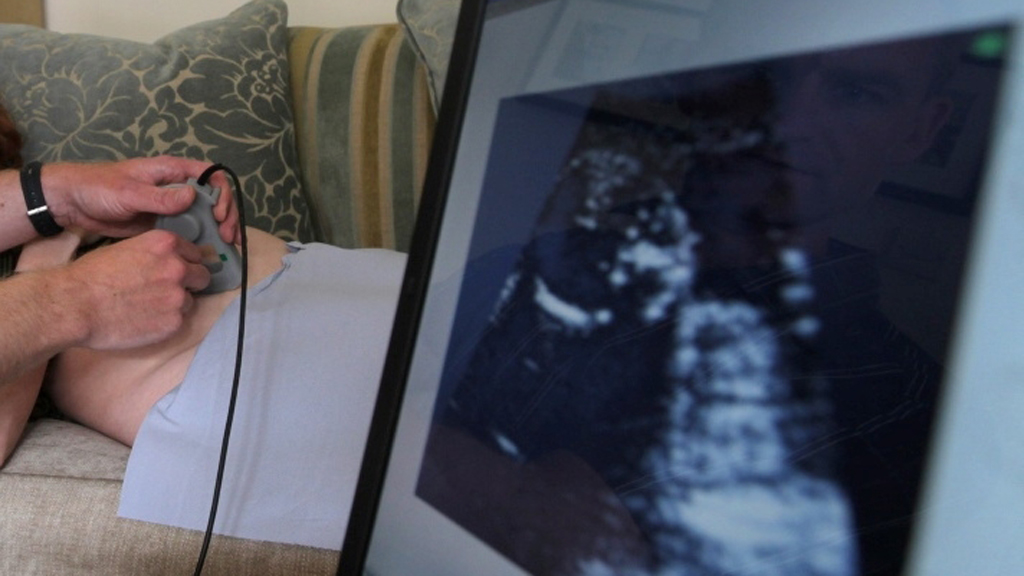Low-cost baby scanner could save lives and money
An electronic engineer inspired by his pregnant wife has devised a new low-cost baby scanner which could save hundreds of thousands of lives.

Sonar expert Jeff Neasham used cheap components to make a hand-held scanner which can plug into a laptop and produce pictures of the unborn child on the computer screen.
The Newcastle University lecturer’s device could be manufactured for as little as £30-£40, compared to the ultrasound machines in UK hospitals which cost between £20,000 and £100,000.
That means the scanners – devised by Mr Neasham and research associate Dave Graham – would be much more affordable for developing countries.
The 39-year-old father-of-two was inspired when his wife Zoe was expecting their first daughter, who is now seven. He said: “The idea came from looking at the pictures of our unborn child.
We are not at the stage where we can completely match the image quality of a really high-end scanner but we are getting closer. Jeff Neasham
“It was my wife’s idea – she suggested we could apply what we knew to make them more affordable and make a low-cost system for lots of people around the world. My background is in sonar which is very similar to ultrasound.
“I started to have a think and I just treated it as an interesting engineering challenge, to see what was the absolute minimum cost of components needed to produce any kind of useful image.
For the first five years it was just a pet project. “We ticked along on a shoe-string budget then we started to get some promising results and so we got funding to build a prototype.
“We used techniques we use in sonar signal production to simplify the circuitry and transducer design while trying to maintain a reasonable resolution in the images.
“We are not at the stage where we can completely match the image quality of a really high-end scanner but the images are improving on a daily basis and we are trying to get more clinicians involved.”
So is the new machine safe? Mr Neasham says that his machine uses the same operating principles as the more expensive hospital version, but “this is putting a lot less ultrasound energy into the body than a typical device in a hospital.”
Life saving potential
The technology could have a major life-saving effect as UN figures show 250,000 women die every year from complications during pregnancy or child birth. Many deaths are avoidable, but for a lack of equipment.
Mr Neasham said his images could easily show if a baby was in the breach position, but the definition was not yet high enough to determine the sex.
There were other uses away from obstetrics, such as diagnosing gallstones and liver problems, but health professionals will determine what else could be done with the technology.
My wife is very excited about it. I keep reminding her it was all her idea. Jeff Neasham
Mr Neasham, from Newcastle University’s School of Electrical and Electronic Engineering, is an expert in underwater sonar technology and has developed systems for imaging the seabed – looking for ship wrecks or specific geographical features – as well as underwater communications and tracking systems.
He said: “We are just trying to get the resolution of the images as good as we can, then we will hand it over to the experts. My wife is very excited about it. I keep reminding her it was all her idea.
“There is still work to be done and it is by no means the finished product but we are very optimistic.”
Vets and farmers have also expressed interest in low-cost scanning.
The research was funded through an Engineering and Physical Sciences Research Council Knowledge Transfer Account.
-
Latest news
-
As India goes to the polls in the world’s largest election – what do British-Indians think?6m

-
Tees Valley: Meet the candidates in one of the biggest contests coming up in May’s local elections4m

-
Keir Starmer says public sector reform will be a struggle7m

-
Nicola Sturgeon’s husband Peter Murrell charged with embezzlement of funds from SNP1m

-
Ukraine might finally get $60billion in American weapons and assistance to defend against Russia3m

-




